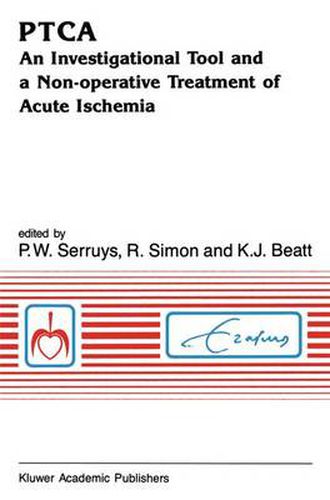Readings Newsletter
Become a Readings Member to make your shopping experience even easier.
Sign in or sign up for free!
You’re not far away from qualifying for FREE standard shipping within Australia
You’ve qualified for FREE standard shipping within Australia
The cart is loading…






This title is printed to order. This book may have been self-published. If so, we cannot guarantee the quality of the content. In the main most books will have gone through the editing process however some may not. We therefore suggest that you be aware of this before ordering this book. If in doubt check either the author or publisher’s details as we are unable to accept any returns unless they are faulty. Please contact us if you have any questions.
Obstruction of coronary blood flow and the resultant consequences are the center stage pathophysiologic events in cardiology today. The speculations of Jenner, Burns, Heberdin, McKenzie, Prinzmetal and many others had until now been left to observations of isolated tissue and intact animal experimentation. Only with the advent of Gruentzig’s technique, which allowed us to ‘work safely inside the coronary arteries’ are we able to observe the effects of coronary occlusion in living conscious man. PTCA provides not only a therapeutic modality for non-operatively opening coronary obstructions, but has also provided the best model for studying the effects of acute ischemia on the heart. The procedure also lead the way to all other interventional cardiology developments, including modern thrombolysis in the setting of acute myocardial infarction. In his previous works, Serruys has examined how PTCA can serve as a model for studying acute ischemia. In this book, he and his co-authors discuss the effects of balloon-induced ischemia on the electrocardiographic changes, coronary blood flow dynamics, cardiac muscle metabolism and left ventricular function, as well as measures to counter these effects and provide for reperfusion in unstable angina and acute myocardial infarction. Technology has expanded the ‘eyes’ of the observer of these events. The authors use many techniques including ECG recording from surface, endocardium, and intracoronary electrodes; angiographic assessment of coronary flow pattern using digital techniques, as well as doppler flow measurements; biochemical assessment of metabolic products stimulated by ischemia; and digital angiographic and echo doppler assessment of left ventricular function.
$9.00 standard shipping within Australia
FREE standard shipping within Australia for orders over $100.00
Express & International shipping calculated at checkout
This title is printed to order. This book may have been self-published. If so, we cannot guarantee the quality of the content. In the main most books will have gone through the editing process however some may not. We therefore suggest that you be aware of this before ordering this book. If in doubt check either the author or publisher’s details as we are unable to accept any returns unless they are faulty. Please contact us if you have any questions.
Obstruction of coronary blood flow and the resultant consequences are the center stage pathophysiologic events in cardiology today. The speculations of Jenner, Burns, Heberdin, McKenzie, Prinzmetal and many others had until now been left to observations of isolated tissue and intact animal experimentation. Only with the advent of Gruentzig’s technique, which allowed us to ‘work safely inside the coronary arteries’ are we able to observe the effects of coronary occlusion in living conscious man. PTCA provides not only a therapeutic modality for non-operatively opening coronary obstructions, but has also provided the best model for studying the effects of acute ischemia on the heart. The procedure also lead the way to all other interventional cardiology developments, including modern thrombolysis in the setting of acute myocardial infarction. In his previous works, Serruys has examined how PTCA can serve as a model for studying acute ischemia. In this book, he and his co-authors discuss the effects of balloon-induced ischemia on the electrocardiographic changes, coronary blood flow dynamics, cardiac muscle metabolism and left ventricular function, as well as measures to counter these effects and provide for reperfusion in unstable angina and acute myocardial infarction. Technology has expanded the ‘eyes’ of the observer of these events. The authors use many techniques including ECG recording from surface, endocardium, and intracoronary electrodes; angiographic assessment of coronary flow pattern using digital techniques, as well as doppler flow measurements; biochemical assessment of metabolic products stimulated by ischemia; and digital angiographic and echo doppler assessment of left ventricular function.